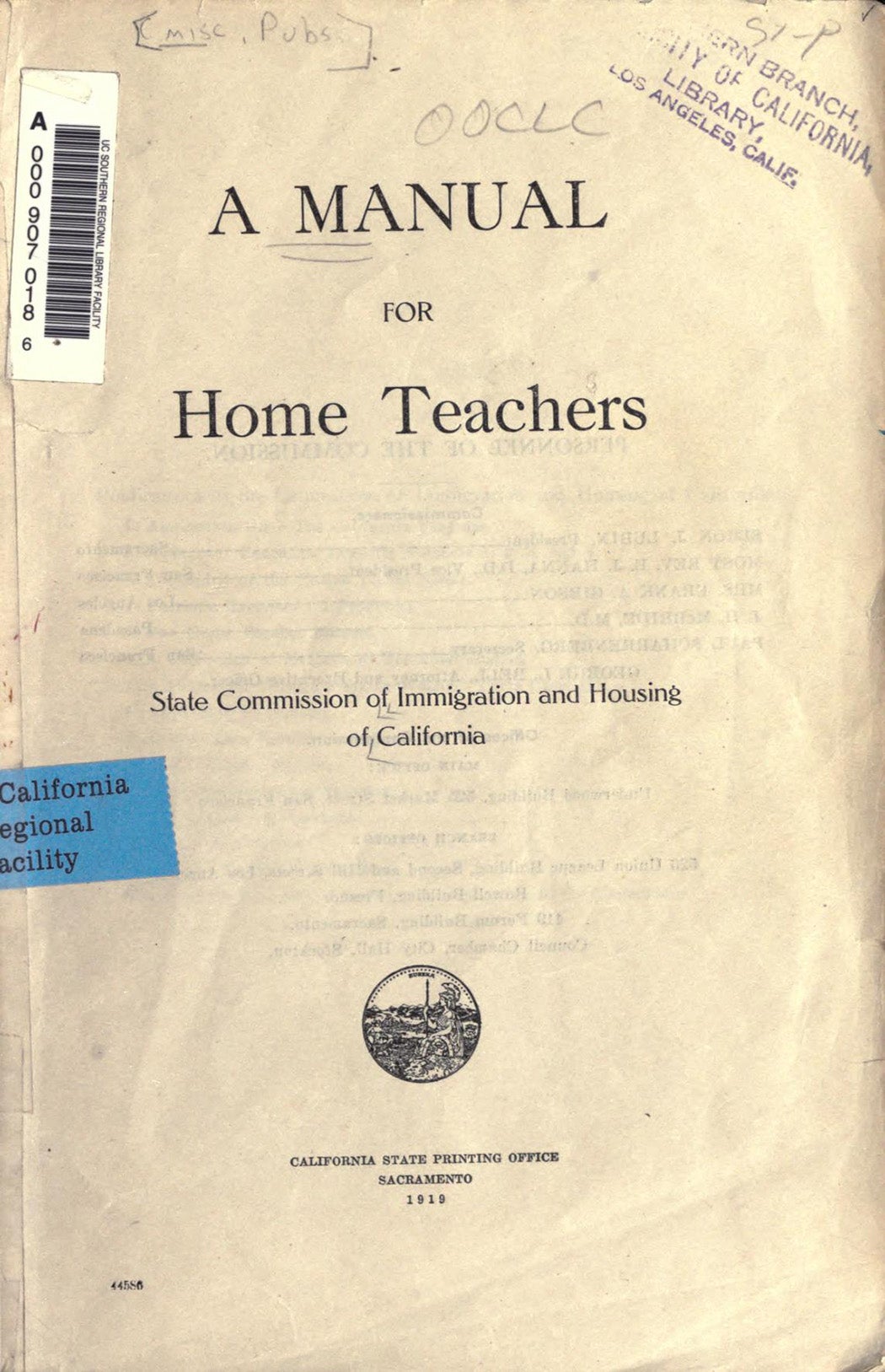How do you tell a story that doesn’t exist in official records?
It’s a daunting task, but historian Magdalena L. Barrera’s work has amplified the voices of the Mexican women targeted by the California Commission of Immigration and Housing (CCIH)’s “Home Teacher Program.” Though its records represent only the viewpoint of the CCIH and volunteer teachers, Barrera recovers the voices of participants by reading between the lines of instruction manuals and other CCIH materials.
The program, which was set up in 1915 and deployed volunteers to “Americanize” immigrant women through home visits and classes, was part of a broader nationwide movement that began in the 1850s. Its “eager progressive volunteers,” armed with manuals from the CCIH, were tasked with recruiting Mexican and other immigrant women to attend lessons in English and housekeeping.
The Americanization campaign was propelled by racist beliefs about immigrant women’s supposed cultural inferiority and poor hygiene, even as lesson plans ignored the reality of immigrant families’ lives. For example, “women learned that ‘their homes are strangers to the unifying influence of a family meal, neatly served and eaten together,’” according to Barrera’s review of the CCIH curriculum.

“In such statements, they were made to confront home teachers’ middle-class vision of family mealtimes, which for working-class communities was often an impossibility due to the family members’ varying work schedules.”
Noting that younger women were key targets of the program, Barrera also remarks that “what proponents of Americanization saw before their eyes was an incredible pool of potential labor” and an opportunity to train Mexican girls as a “docile workforce” for manual jobs such as domestic labor and food service.
Still, she finds the CCIH materials to be “exciting documents because they contain a wealth of information.”
In one instance, she examines a scripted dialogue where the home teacher tries to drum up interest in an English class, while the “pupil” offers a host of reasons not to go.
“This dialogue likely reflects home teachers’ recruitment challenges and immigrant women’s ability to think of a number of reasons to explain their reluctance to attend classes,” she writes. “Most interesting is the phrase ‘My head is dull,’ which either is a poor translation of me duele la cabeza (‘my head hurts’) or a fascinating appropriation of CCIH language about immigrant women’s minds being dulled by drudgery.”
Besides the biases of CCIH administrators and workers, the training materials thus also offer “rare opportunities to hear the voices of immigrant women whose names have rarely been recorded,” she says.







